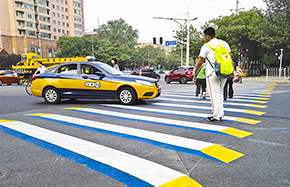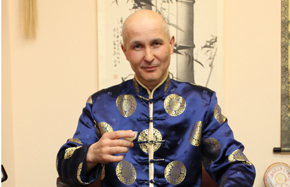Encapsulating the Secrets of Shanxi
I am not one who was born in the possession of knowledge; I am one who is fond of antiquity and earnest in seeking it– These words from the great Chinese philosopher Confucius ring true for me, and with this resolute thought entwined in my spirit, I agreed to accept an invite from China Daily to visit Shanxi.
Chinese culture and its ancient civilization have a lot to offer international eyes and I was keen to take in all I could. I knew Shanxi to be one of the lesser known cities in China and prior to my trip, all I had heard was mostly about its prime production capabilities in coal and the accompanying pollution. Much to my surprise and relief, Shanxi has more than 3000 years of history and therefore, is archeologically recognized as the very Cradle of Chinese civilization.
Shanxi derives its name from its geographical location, which is to the west of the Taihang Mountains. Shan means mountain in Mandarin and Xi means west, and as such, Shanxi means to the west of the Mountains. The Yellow river is the birthplace of Chinese civilization and it forms Shanxi's western border. Shanxi has truly evolved from the mercantile trade of the Jin Merchants from 1368-1911 to Coal mining and then now also to tourism. The amount of breathtaking architecture and murals in Shanxi, alongside courtyards, pavilions, towers, cultural heritages, temples, shrines and relics, make Shanxi akin to a museum of ancient architecture.
The second biggest city of Shanxi, Datong has some of the most important not-to-miss tourist spots, such as Yanmen Pass, the head of the nine famous passes in China along the famed and majestic Great Wall. I was truly amazed as this was sheer history unfolding in front of my eyes. Yanmen Pass is located 20 kilometers north of Dai county and has one of the most preserved parts of the Great Wall. This section of the Great Wall is 5033 meters long and it is about 6-8 meters high. We were lucky to witness a dramatic Chinese opera happening there. Observing the performers, one cannot help but be transfixed to an era long gone. It easily became the highlight of the trip, but there was more to come!
Among the famous temples in Shanxi, located in one of its other cities, Shouzhou is the Yingxian Wooden Pagoda. It is essentially the Sakyamuni Pagoda, Sakyamuni being the founder of Buddhism who brought this religion from India to China through the historical Silk Route. The Sakyamuni Pagoda was built in Liao dynasty consuming 3000 cubic meters of red pines to build. The tower itself is 67.4 meters high and 30.27 meters in diameter. An interesting tidbit of information is that it is regarded as one of the odd towers of the world like the Leaning Tower of Pisa and Eiffel Tower over the years, it has started leaning a bit. A section of it is not permissible to enter by the public due to this very reason. For me, as I saw the tooth relic of Sakyamuni and felt peace in the wind chimes that the ringing bells melodiously orchestrated with the air, I knew this was a part of China, which the world simply had to know of.
Yungang Grottoes is another treasure house of Chinese culture erected during the Northern Wei dynasty (AD 386--534). These are located in the valley of the Shi Li river about 16 km west of Datong. It has 51 main grottoes and more than 5100 Buddha statues. More than the number, what intrigued me the most was the variety of positions and expressions in different statues. I must admit, it truly left me in awe of the art of the masterpieces.
After going west of Datong it was time to move downtown and about 80 kilometers from there, I found a place I literally got lost in! It was the Hanging Temple, which as the name suggests, is a dream that cascades slowly in the atmosphere like raindrops of the dew in the air. The air had a slight chill in it and I felt it invited me to partake in the mystery of the structure built into the cliff near Mountain Hengshan. Scenic waterfalls alongside the Hanging Temple offer respite to weary city eyes and I am not surprised, I got lost in this heavenly beautiful place!
The last stop of my trip was a visit to the Industrial Park of Guangling Paper-cutting and it may be the last stop of the trip, but it certainly wasn't the least important. With the advanced paper-cutting techniques, Guangling paper-cutting factory displayed how human hands with precision can make a beautiful breathtaking piece of art and I actually purchased one of the pieces as I simply had to take a symbol of this art home with me.
With the trip onto closure, I must mention that alongside these great tourism spots, just the ride between these places offers spectacular views of the Chinese countryside and that in itself is also a treat for the eyes. Encapsulating Shanxi according to me is to understand the real China through the years.
With a dynamic go-getter personality and a twinkle in her eyes, Khyati Shah comes from Mumbai and is a writer now in Shanghai.





















